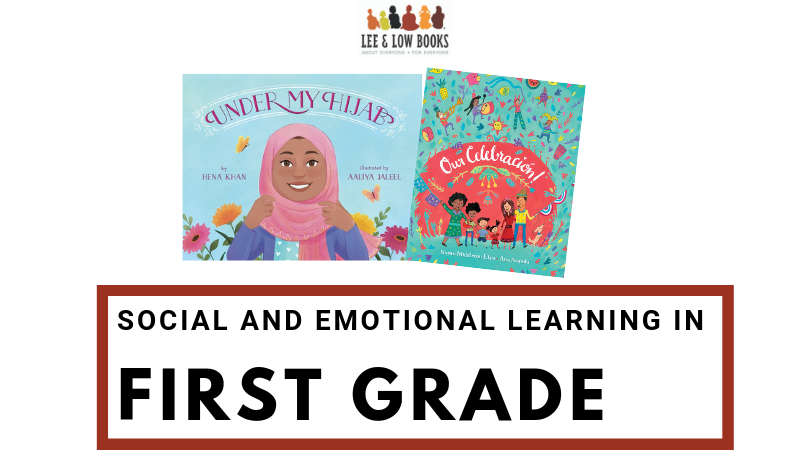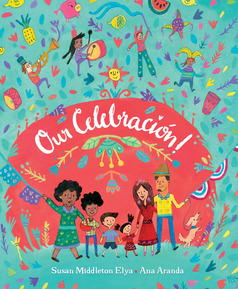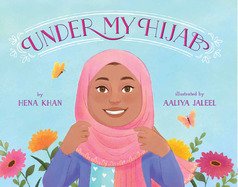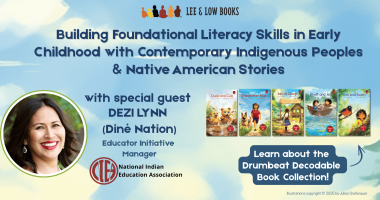
Social Emotional Learning (SEL) is a hot topic, but it’s certainly not new. Skills like empathy, cultivating and maintaining positive relationships, recognizing and managing emotions, problem solving, approaching tasks with grit and perseverance, and taking on others’ perspectives have always, and will always, be crucial to kids’ success. Research shared by CASEL reports that SEL programs lead to “immediate improvements in mental health, social skills, and academic achievement,” and “up to 18 years later, students exposed to SEL in school continue to do better than their peers on a number of indicators: positive social behaviors and attitudes, skills such as empathy and teamwork, and academics.” SEL is certainly worthy of time and attention from those who support children’s development.
Books are valuable tools for guiding conversations about SEL topics. Children can examine and learn from characters’ actions and experiences and relate them to their own. Of course, book selection is key. When kids see both themselves and others in diverse books, it says, “You matter. Reflect on your experiences.” and “Others matter. Listen and learn.” Therein lies the heart of SEL.
As students grow and change, so do their social emotional learning needs. Linking diverse books to SEL goals and challenges across different ages is a powerful way to support students as they navigate each developmental stage. This blog series, written by educator Lindsay Barrett, explores how diverse books can be used to support social emotional learning at different grade levels.
Nurturing Perspective-Taking Skills: Using Diverse Books to Support Social Emotional Learning in First Grade
First graders are a combination of sweet innocence and surprising insight. First grade is a pivotal year for the development of more sophisticated and flexible social thinking — with coaching, students can move from considering the adage “take a walk in someone else’s shoes” to literally mean swapping sneakers with a buddy to the expression’s intended suggestion of perspective-taking. First graders can start to recognize that others’ perspectives may be different than their own, without being “wrong.” Furthermore, many first graders are developmentally able to regulate their reactions to others’ opinions and feelings — again, with coaching!
CASEL categorizes these types of social and emotional skills as “social awareness,” which they define as the ability to “understand the perspectives of others and empathize with them, including those from diverse backgrounds and cultures.” Safe and supportive classrooms are the ideal environment in which to hone these skills. Diverse books can encourage learning about others’ experiences, and responding to information shared with interest and respect. Two titles particularly suited for use in first grade classrooms are Our Celebración by Susan Middleton Elya and Under My Hijab by Hena Khan.
Dynamic and fun, Our Celebración tells the story of one community’s day-long summer celebration and offers numerous possibilities for practicing perspective-taking. Compelling situations can launch discussions about how individuals can experience the same circumstances in different ways. For instance, you might ask, “How would it feel if you were enjoying a big parade and spotted rain clouds moving in?” and follow with “How would it feel for someone who was feeling really hot?” Or, you might ask, “What would it feel like to be at a parade with clowns throwing candy?” and follow with “How would it feel for someone afraid of clowns?”
Our Celebración also invites students to share their own perspectives and respectfully notice those of classmates. It could be used at the start of the year to introduce classroom norms for sharing opinions. For instance, you could teach a whole class response system — like thumbs up/thumbs down — using questions  drawn from the illustrations, like “Do you like biking?” and “Can you ride a unicycle?” You might also teach students to scan the room and notice others’ responses politely, without judgement. More complex questions, like “Do you enjoy parades? Why or why not?” or “What’s your favorite food to eat at a celebration? What do you like about it?” could be used as partner conversation topics. (For additional lessons about classroom discussion participation and talking with partners, check out this free Building Classroom Community Unit for First Grade.)
drawn from the illustrations, like “Do you like biking?” and “Can you ride a unicycle?” You might also teach students to scan the room and notice others’ responses politely, without judgement. More complex questions, like “Do you enjoy parades? Why or why not?” or “What’s your favorite food to eat at a celebration? What do you like about it?” could be used as partner conversation topics. (For additional lessons about classroom discussion participation and talking with partners, check out this free Building Classroom Community Unit for First Grade.)
Finally, because Our Celebración includes Spanish words that are not defined within the main text (though there is a glossary), it presents the chance to explore the range of possible perspectives on language learning. Ask, “If you speak Spanish, how does it feel to have Spanish words included in this story? If you don’t, how does it feel to hear words in the story you don’t understand? How did you figure out what some of them meant? What else would help? How could we use those ideas to help someone learning English?” Whether students are ELLs or peers of ELLs, cultivating empathy for the range of experiences and emotions related to language is an important recurring classroom conversation.
Under My Hijab stars a cheerful young girl who shares how each of the women in her extended Muslim family wear the hijab. It is an outstanding resource for coaching students to build knowledge about a cultural practice with respect and interest. Before reading, initiate conversations with students about how articles of clothing can be meaningful to people. Start by asking, “Do you have something special you like to wear? Why is it important to you?” Brainstorm a list of reasons someone might choose to wear certain clothing. (First grade responses you might expect include, “To keep warm/cool/safe from sunburn,” “To play a sport,” “To like how you look,” etc.) Have an anecdote about a friend or family member in mind to help introduce the idea that clothing can reflect one’s  beliefs, if students do not mention this reason. For instance, share: “My uncle always wears a special hat called a yarmulke because that’s one way some people show respect for God in the Jewish religion.” Acknowledge that sometimes students may wonder about articles of clothing they notice others wearing. List, and even role play, respectful reactions to another’s clothing, and ways to ask questions about something unknown. Learning appropriate ways to seek information about another’s choices is a key aspect of building social awareness.
beliefs, if students do not mention this reason. For instance, share: “My uncle always wears a special hat called a yarmulke because that’s one way some people show respect for God in the Jewish religion.” Acknowledge that sometimes students may wonder about articles of clothing they notice others wearing. List, and even role play, respectful reactions to another’s clothing, and ways to ask questions about something unknown. Learning appropriate ways to seek information about another’s choices is a key aspect of building social awareness.
The varied, engaging portrayals of Muslim women wearing the hijab in public in Under My Hijab— as a baker, doctor, artist, student, volunteer, and athlete — and removing it at home to enjoy hobbies and family time, can help first graders unfamiliar with the hijab begin to appreciate it. The collection of examples also illustrates the diversity of experiences within a culture. Six and seven-year-olds still tend towards all-or-nothing generalizations; gently stretch their thinking with questions like, “How did the women each wear the hijab differently? or “How did Mama look different at work than at home?” Encourage students to think about the author’s perspective, too, by asking, “Why do you think the author wanted to write this book?” For further practice building knowledge about others, have students interview each other about what different people in their families like to do outside and in the home, and what they wear.
Diverse books present many chances to take that proverbial stroll in unfamiliar footwear. By both examining the perspectives of book characters, and using book topics as springboards for classroom conversations in which students can listen to each other, that walk can help young students stretch and deepen their thinking about others.
Books offer so many opportunities for social emotional learning in first grade, and at all ages and stages. For more ideas about supporting social emotional learning using diverse books, check out Lee and Low’s Social Emotional Learning Diverse Book List for Grades PreK-8. Also don’t miss the recording of the webinar Using Diverse Books to Support Social and Emotional Learning with Katie Potter, Lee & Low’s literacy specialist.
More in this series:
Using Diverse Books to Support Social and Emotional Learning in Preschool
Using Diverse Books to Support Social and Emotional Learning in Kindergarten
 About the Author: Lindsay Barrett is a former elementary teacher and literacy nonprofit director. She currently works as a literacy consultant and stays busy as a parent of four children under six. Find out more about her work at lindsay-barrett.com.
About the Author: Lindsay Barrett is a former elementary teacher and literacy nonprofit director. She currently works as a literacy consultant and stays busy as a parent of four children under six. Find out more about her work at lindsay-barrett.com.








